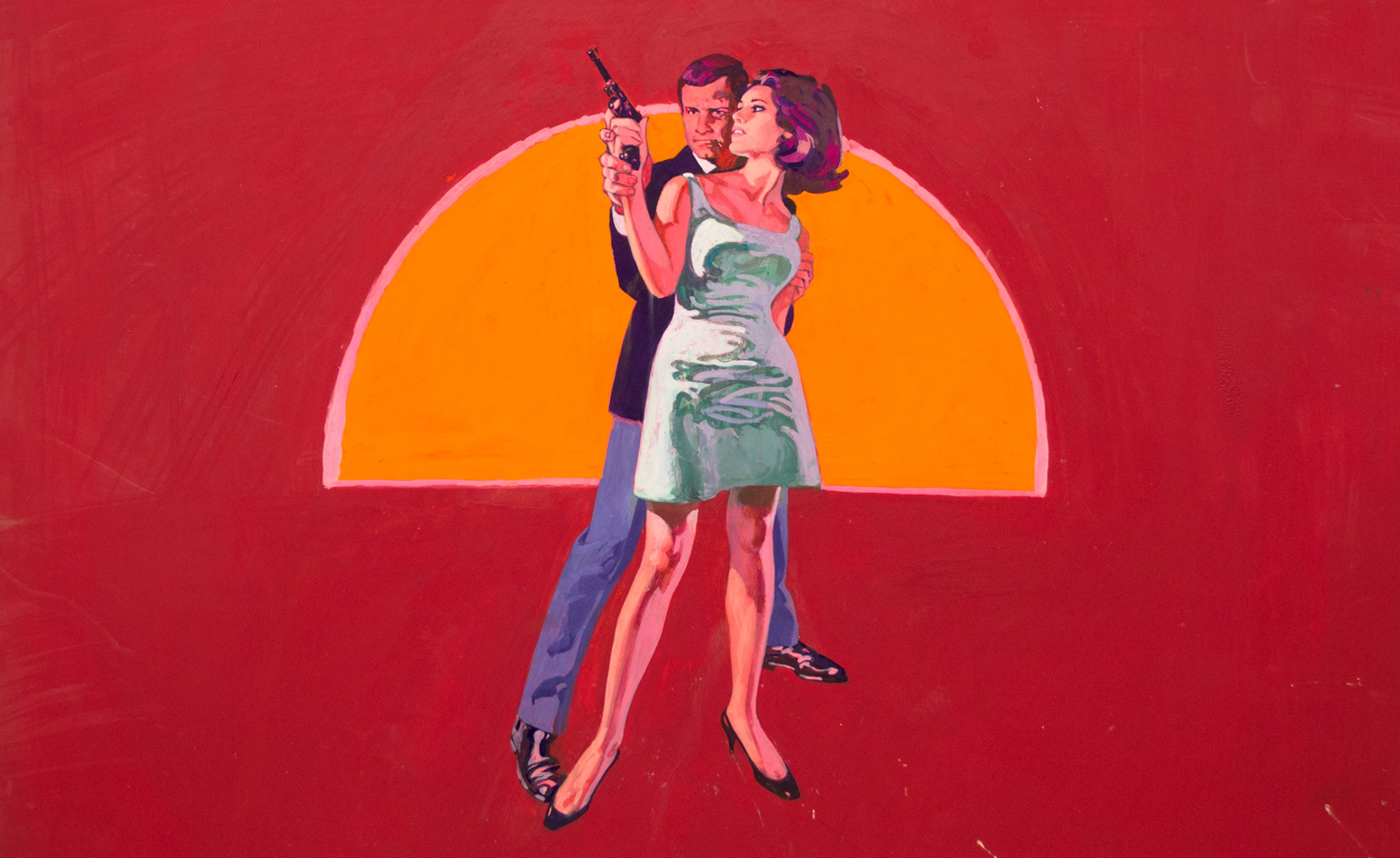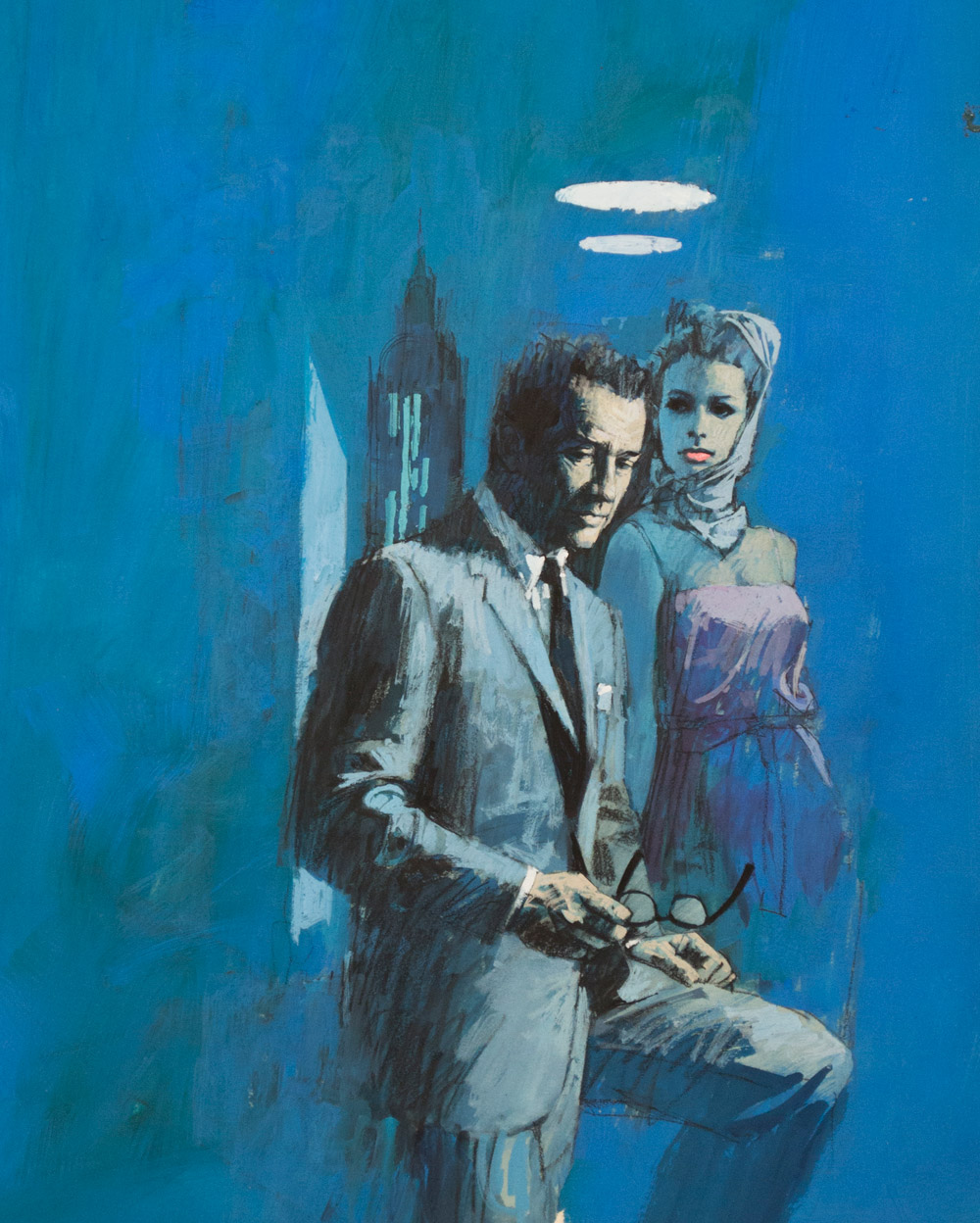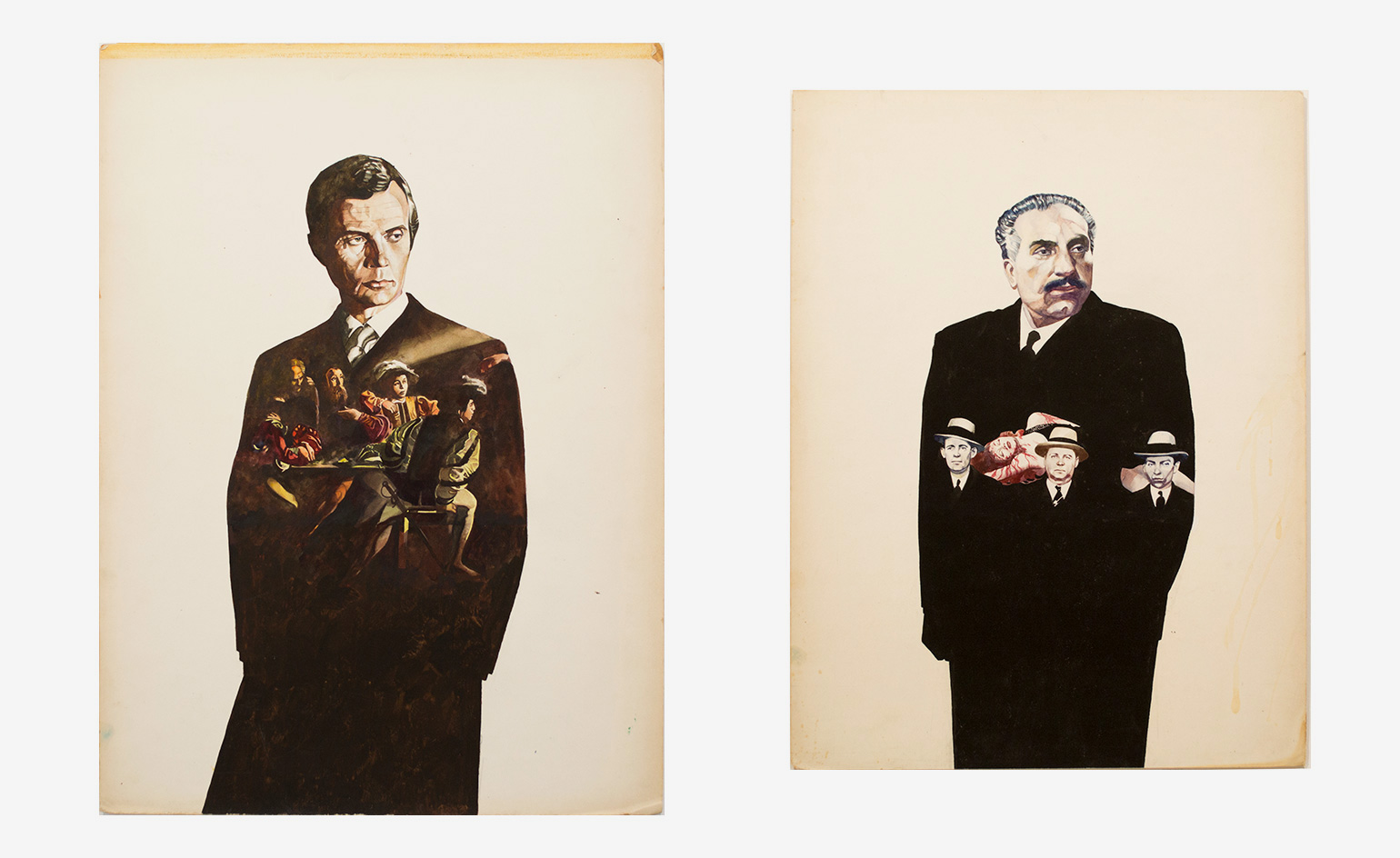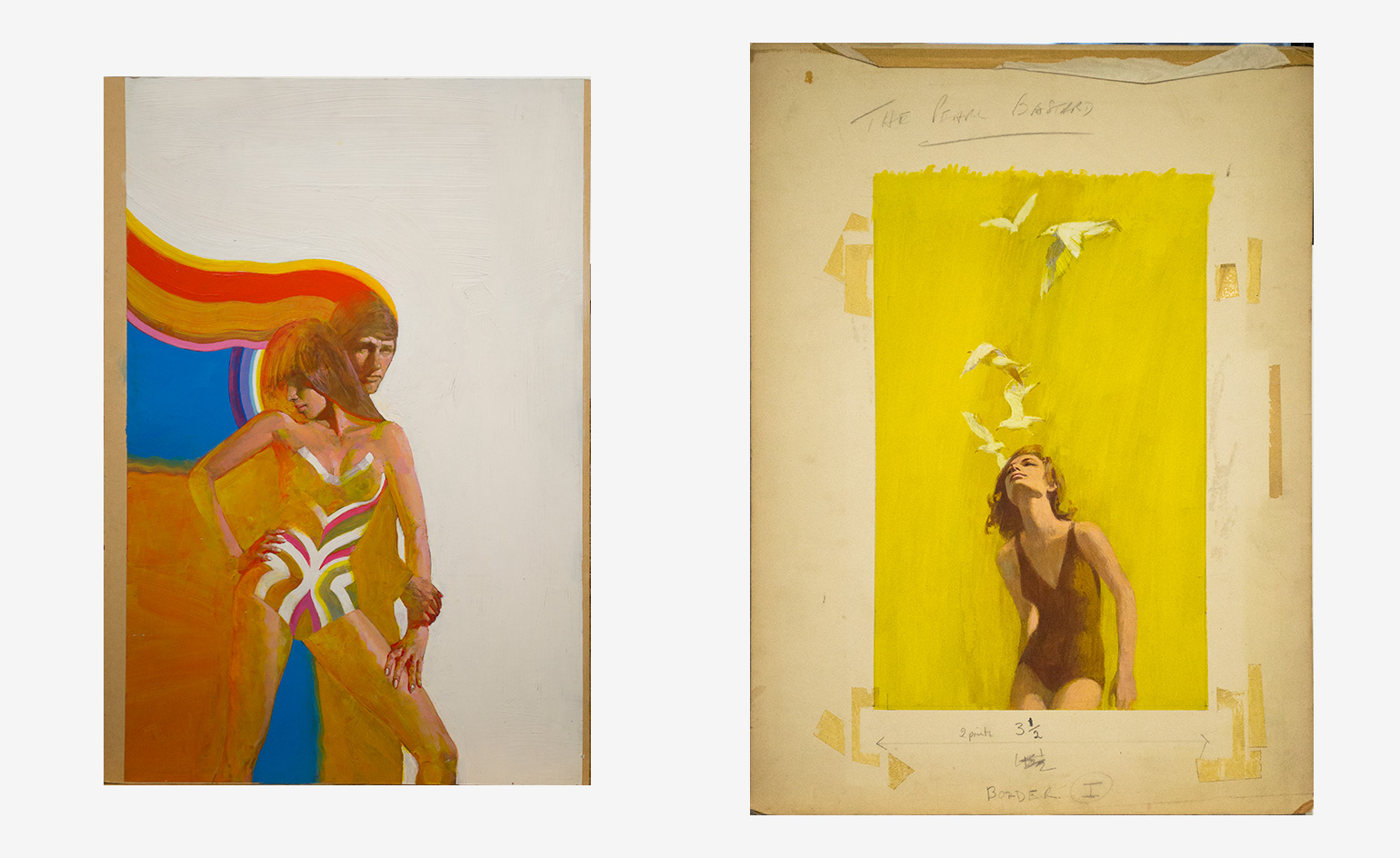How a London gallerist uncovered a trove of 1960s and 70s pulp illustration

The worlds evoked by 1960s pulp novels were bombastic, beautiful and base. Filled with larger than life characters, sensational storylines, and love triangles of pin-up proportions, it was the Netflix of the 60s.
Behind the scenes of the novels’ production, however, manufactured glamour gave way to dusty London and Italian agencies, filled with wildly skilled illustrators. The likes of Renato Fratini, Michael Johnson and Gianluigi Coppola worked all hours, rattling off impeccable sketches, with nothing for inspiration but the rugged notes of speed-readers employed to consume manuscript after manuscript.
These illustrators built an aesthetic – which in turn built an industry – on the back of bits of old board. Though the paperbacks were published in their millions on cheap, wood-pulp paper (the industry’s namesake), many of the original illustrations were discarded, lost or seen as worthless.
Lever Gallery co-founder and director Didier Madoc-Jones knows better. He has dedicated years hunting them in attics and online stores, and now, the walls of his London gallery are lined with the oft-forgotten patrons of pulp, providing glimmers of treasure in trash fiction in the exhibition ‘Uncovered: Illustrating the Sixties and Seventies’.

Renato Fratini, for The Hucksters, 1965.
‘The joy of pulp illustration was its lack of subtlety, and its over-exaggeration,’ he says. ‘It helped publications off the shelves, tempting readers into the charismatic world of the bestseller.’
Before long, publishers of ‘more respectable’ literature were mining the same rich vein. In the late 60s, pulp illustration found itself nestling in the arch of the high brow, its glamorous promise employed to shift books penned by the likes of Simone de Beauvoir, Sinclair Lewis and CP Snow. All of a sudden, the works of Renato Fratini and Michael Johnson were lining the bookshelves of a readership that had probably never heard of them.
But, just as it was easing into its new life of leather-bound luxury, pulp illustration lost out to the 1970s new kid on the block – photography, which ushered in an era of harder edged realism.

Woman with Pines, 1964-65, by Michael Johnson.
Despite being bumped from the popular consciousness, Madoc-Jones believes that the original illustrations deserve to be ‘appreciated for their artistic merit’ today. ‘When you look closely at the original works we have presented in the gallery, they’re more akin to abstractions, with great sweeping brush strokes. The level of talent these artists had was quite unbelievable.’ Indeed, the work of Eduardo Paolozzi, Richard Hamilton and Peter Blake can be read in the colourful, post-war Americana of the drawings.
Nonetheless, pulp was the art of the hired gun, managed by deadline dealers. That these illustrators were able to turn around works of such dynamism in a matter of moments is perhaps their greatest cache. It’s something alien to our mindset in this digitally reliant age, where if we want to add a layer or remove a detail, we turn to Photoshop, not a new piece of chipboard.

Left, Homecomings, by Gianluigi Coppola, 1966. Right, The Case of the Curious Bride, by Gianluigi Coppola, 1966.

Left, The Oldest Confession, by Gianluigi Coppola, 1972. Right, Mile High, by Gianluigi Coppola, c1972.

Left, Psychedelic Couple, by Michael Johnson, c1966. Right, The Pearl Bastard, by Renato Fratini, c1960s.
INFORMATION
‘Uncovered: Illustrating the Sixties and Seventies’ is on view until 24 March. For more information, visit the Lever Gallery website
ADDRESS
Lever Gallery
153-157 Goswell Road
London EC1V 7HD
Receive our daily digest of inspiration, escapism and design stories from around the world direct to your inbox.
Elly Parsons is the Digital Editor of Wallpaper*, where she oversees Wallpaper.com and its social platforms. She has been with the brand since 2015 in various roles, spending time as digital writer – specialising in art, technology and contemporary culture – and as deputy digital editor. She was shortlisted for a PPA Award in 2017, has written extensively for many publications, and has contributed to three books. She is a guest lecturer in digital journalism at Goldsmiths University, London, where she also holds a masters degree in creative writing. Now, her main areas of expertise include content strategy, audience engagement, and social media.
-
 Click to buy: how will we buy watches in 2026?
Click to buy: how will we buy watches in 2026?Time was when a watch was bought only in a shop - the trying on was all part of the 'white glove' sales experience. But can the watch industry really put off the digital world any longer?
-
 Don't miss these art exhibitions to see in January
Don't miss these art exhibitions to see in JanuaryStart the year with an inspiring dose of culture - here are the best things to see in January
-
 Unmissable fashion exhibitions to add to your calendar in 2026
Unmissable fashion exhibitions to add to your calendar in 2026From a trip back to the 1990s at Tate Britain to retrospectives on Schiaparelli, Madame Grès and Vivienne Westwood, 2026 looks set to continue the renaissance of the fashion exhibition
-
 Out of office: The Wallpaper* editors’ picks of the week
Out of office: The Wallpaper* editors’ picks of the week'Tis the season for eating and drinking, and the Wallpaper* team embraced it wholeheartedly this week. Elsewhere: the best spot in Milan for clothing repairs and outdoor swimming in December
-
 Out of office: The Wallpaper* editors’ picks of the week
Out of office: The Wallpaper* editors’ picks of the weekFar from slowing down for the festive season, the Wallpaper* team is in full swing, hopping from events to openings this week. Sometimes work can feel like play – and we also had time for some festive cocktails and cinematic releases
-
 The Barbican is undergoing a huge revamp. Here’s what we know
The Barbican is undergoing a huge revamp. Here’s what we knowThe Barbican Centre is set to close in June 2028 for a year as part of a huge restoration plan to future-proof the brutalist Grade II-listed site
-
 Out of office: The Wallpaper* editors’ picks of the week
Out of office: The Wallpaper* editors’ picks of the weekIt’s wet, windy and wintry and, this week, the Wallpaper* team craved moments of escape. We found it in memories of the Mediterranean, flavours of Mexico, and immersions in the worlds of music and art
-
 Each mundane object tells a story at Pace’s tribute to the everyday
Each mundane object tells a story at Pace’s tribute to the everydayIn a group exhibition, ‘Monument to the Unimportant’, artists give the seemingly insignificant – from discarded clothes to weeds in cracks – a longer look
-
 Out of office: The Wallpaper* editors’ picks of the week
Out of office: The Wallpaper* editors’ picks of the weekThis week, the Wallpaper* team had its finger on the pulse of architecture, interiors and fashion – while also scooping the latest on the Radiohead reunion and London’s buzziest pizza
-
 Out of office: The Wallpaper* editors’ picks of the week
Out of office: The Wallpaper* editors’ picks of the weekIt’s been a week of escapism: daydreams of Ghana sparked by lively local projects, glimpses of Tokyo on nostalgic film rolls, and a charming foray into the heart of Christmas as the festive season kicks off in earnest
-
 Wes Anderson at the Design Museum celebrates an obsessive attention to detail
Wes Anderson at the Design Museum celebrates an obsessive attention to detail‘Wes Anderson: The Archives’ pays tribute to the American film director’s career – expect props and puppets aplenty in this comprehensive London retrospective